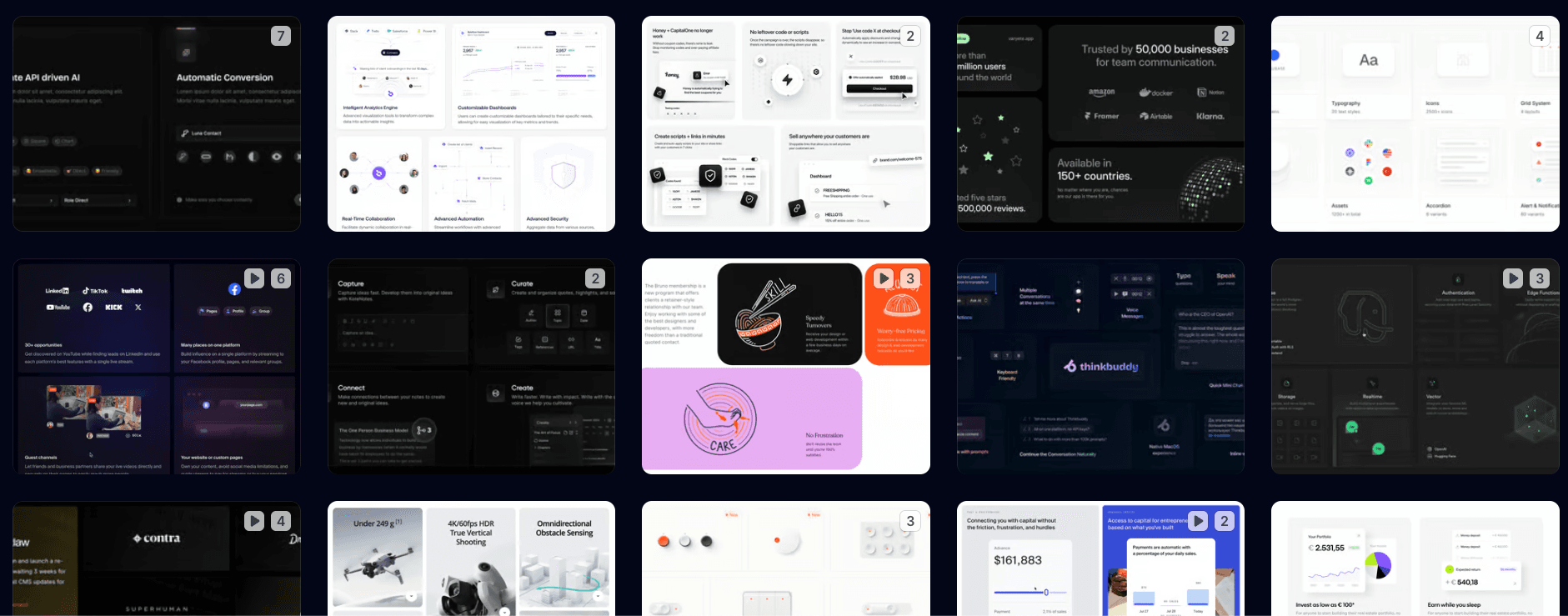As a designer, it’s important to have a solid foundation in design principles to create visually appealing and effective website designs. These principles are fundamental guidelines that help designers create cohesive and well-balanced compositions. Here are the six design principles every designer should know:

1. Balance
Balance refers to the distribution of visual weight in a design. There are three types of balance: symmetrical, asymmetrical, and radial. Symmetrical balance is achieved when elements are evenly distributed on either side of a central axis. This can create a sense of stability and order in a design. Asymmetrical balance is achieved when elements of different sizes and visual weights are placed on opposite sides of the design. This can create a sense of movement and dynamism in a design. Radial balance is achieved when elements are arranged around a central point. This can create a sense of unity and harmony in a design.
It’s important to consider balance when designing to create a visually appealing and effective composition. Too much balance can make a design feel static and boring, while too little balance can make a design feel chaotic and confusing. Striking the right balance is key to creating a successful design.
2. Contrast
Contrast refers to the difference between elements in a design. It can be created through the use of color, size, texture, and other design elements. High contrast can draw attention to specific elements and create a sense of drama in a design. Low contrast can create a more cohesive and harmonious design.
Contrast is an important design principle because it helps to distinguish different elements in a design and guide the viewer’s eye. Without contrast, a design can feel flat and uninteresting. It’s important to consider the use of contrast in a design to create visual interest and hierarchy.
3. Emphasis
Emphasis refers to the focal point of a design, or the element that stands out the most. It can be achieved through the use of size, color, placement, or other design elements. It’s important to have only one focal point in a design to avoid confusion and create a clear hierarchy of information.
The focal point of a design is the most important element and should be the first thing that the viewer’s eye is drawn to. Establishing a clear focal point helps to guide the viewer’s eye and make the design more effective in conveying information.

4. Unity
Unity refers to the way in which all the elements in a design work together to create a cohesive whole. It can be achieved through the use of repetition, alignment, and proximity. Repetition involves using the same design elements throughout the design, such as using the same font or color scheme. This helps to create a sense of unity and cohesiveness in a design. Alignment involves aligning elements in a consistent manner. This helps to create a sense of order and structure in a design. Proximity involves grouping related elements together to create a sense of unity. This helps to distinguish different sections or areas of a design.
Unity is an important design principle because it helps to create a cohesive and harmonious design. Without unity, a design can feel disjointed and confusing. It’s important to consider unity when designing to create a cohesive and effective design.
5. Hierarchy
Hierarchy refers to the way in which a design conveys importance and priority of information. It can be achieved through the use of size, color, placement, and other design elements. Establishing a clear hierarchy helps guide the viewer’s eye and makes the design more effective in conveying information.
Hierarchy is an important design principle because it helps to organize and structure information in a design. Without hierarchy, a design can feel cluttered and overwhelming. It’s important to consider hierarchy when designing to create a clear and effective layout.
6. Proportion
Proportion refers to the size and scale of elements in relation to each other and the overall design. It’s important to consider proportion when designing to create a balanced and cohesive design.
Proportion is an important design principle because it helps to create a sense of harmony and unity in a design. Elements that are out of proportion can feel jarring and disrupt the overall balance of a design. It’s important to consider the size and scale of elements in relation to each other and the overall design to create a cohesive and visually appealing composition.

Final Thoughts On Design Principles
Incorporating these design principles into your work will help you create visually appealing and effective designs. Keep these principles in mind as you begin your design process and you’ll be well on your way to creating professional and successful designs.
As a designer, it’s important to constantly strive to improve your skills and knowledge. By understanding and applying these fundamental design principles, you’ll be able to create designs that are visually appealing, effective, and professional. Practice applying these principles to your work and you’ll soon see an improvement in the quality and effectiveness of your designs.
Design is a constantly evolving field and it’s important to stay up-to-date on the latest trends and techniques. By staying current and continuously learning, you’ll be able to bring fresh and innovative ideas to your designs. Take the time to study and practice these design principles, and you’ll be well on your way to becoming a successful and skilled designer.
As you continue to grow and develop as a designer, it’s important to keep these design principles at the forefront of your mind. These principles are the foundation of good design and will serve as a guide as you create compositions.
However, it’s also important to remember that these principles are just that – principles. While they should be followed as a general guide, they are not hard and fast rules. It’s important to be flexible and adaptable in your design process, and to be willing to experiment and try new things. By being open to new ideas and approaches, you’ll be able to push the boundaries and create unique and innovative designs.
Recommended Reading: 5 Tips For Designing an Eye-Catching WordPress Website
Additional Design Principles To Consider
In addition to the design principles outlined above, there are many other principles and techniques that designers should be aware of. Some other important principles to consider include:
- Repetition: Repeating elements throughout a design can create a sense of unity and cohesiveness.
- Alignment: Aligning elements in a consistent manner helps to create a sense of order and structure in a design.
- Proximity: Grouping related elements together helps to distinguish different sections or areas of a design.
- White space: Using negative space, or white space, effectively can help to create a sense of balance and clarity in a design.
- Typography: Choosing the right font and using it effectively can greatly impact the overall look and feel of a design.
By understanding and applying these principles and techniques, you’ll be able to create visually appealing and effective designs that communicate your message effectively. Remember to constantly study and practice, and you’ll continue to grow and improve as a designer.
As you continue to develop your skills as a designer, it’s important to remember that design is not just about creating visually appealing compositions. It’s also about solving problems and effectively communicating ideas and messages. In order to do this effectively, it’s important to have a strong understanding of your audience and the purpose of the design.
Recommended Reading: Why Good Web Design Matters for Small Businesses
Before starting any design project, it’s important to clearly define the goals and objectives of the design. What is the message you want to convey? Who is the target audience? What action do you want the viewer to take? By answering these questions, you’ll be able to create a design that is tailored to your specific audience and purpose.
In addition to understanding your audience and purpose, it’s also important to consider the context in which the design will be viewed. Will it be displayed on a website or in print? Will it be viewed on a large screen or a small phone? These considerations will impact the design decisions you make, such as the size and placement of elements, the use of color, and the overall layout.
By considering your audience, purpose, and context, you’ll be able to create designs that are not only visually appealing, but also effective in communicating your message and achieving your goals. As you continue to grow and develop as a designer, remember to always consider these factors in your design process.
Recommended Reading: The Role of Human Psychology in Web Design, Marketing, & SEO



